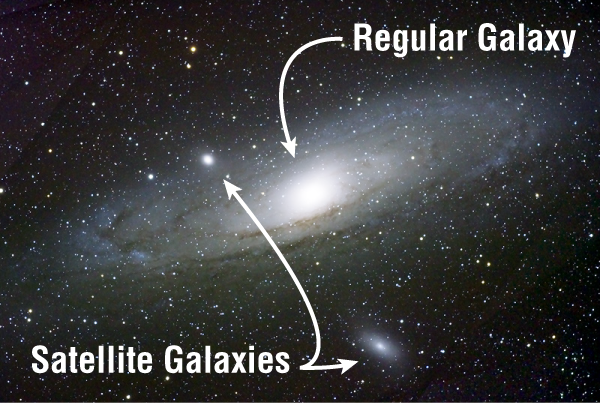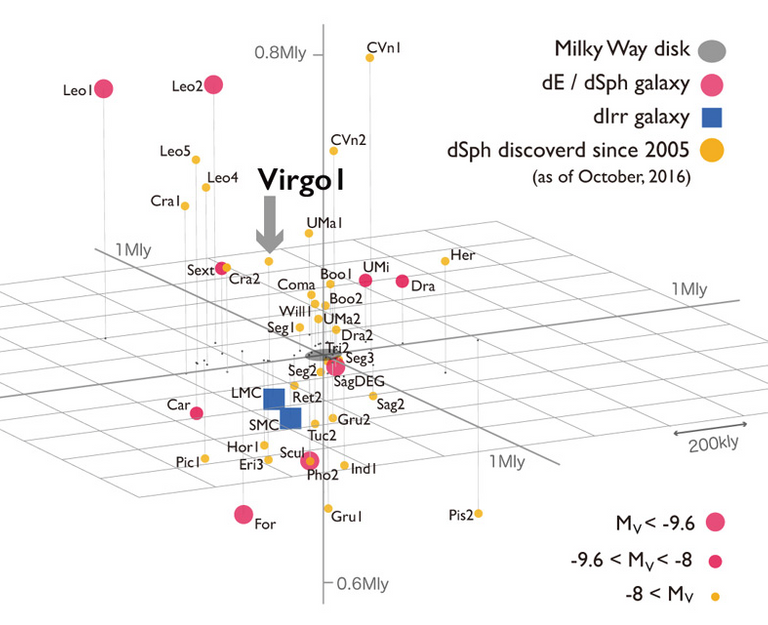Introduction
While researching the next topic for my series “Is The Milky Way More Than Your Typical Galaxy” I came across something I would like to share called the Missing Satellite or the Dwarf Galaxy Problem.
What is a Satellite Galaxy?
In short, a satellite galaxy is like any other galaxy except for that they are stuck in the orbit of an even larger and more massive galaxy. Satellite galaxies can be distinguished from other star clusters because they tend to be more organized and structured than such clusters. However, because of the pull from their harbouring galaxy, satellite galaxies generally can only progress into elliptical galaxies and are unable to develop into a more complex spiral galaxy.

Although the satellite galaxies are affected by the gravitational attraction between them and their harbouring galaxy, we can still use them to improve our models predicting the process of galaxy formation. For this article we will be focusing on how satellite galaxies impact our understanding of dark matter and the universe’s expansion.
The Missing Satellite Problem
Currently, we believe that as dark matter caused the universe to expand, clusters of matter began to form into the large spiral galaxies we have today. However, the smaller clusters of matter around these future galaxies would require significantly more time to properly develop into galaxies. Because of this, our models predict that older galaxies (such as the Milky Way) should include hundreds of these less developed or dwarf galaxies. In fact, some models predict the existence of over 500 dwarf galaxies in a galaxy like the Milky Way!
Despite the theory, our models, we have only located roughly 50 such satellite galaxies in our milky way!
Here is a graph from 2016 depicting the location of satellite galaxies around us. The arrow and label Virgo I is for the most recent satellite galaxy detected at the time.
Next time we will return to our series to take a look at the satellite galaxies we have detected in the milky way and the distinctions between them in and satellite galaxies from other nearby galaxies. Understanding their differences will help us make sense of some of the factors which are potentially causing this discrepancy.
If you have any questions or know anything you would like to add feel free to do so in the comments! Or if you have any suggestions on how I can improve I would love to hear them!
If you enjoyed my content, please consider upvoting to help others find my content or even follow me if you would like to hear more!
Work Cited:
https://spaceplace.nasa.gov/satellite-galaxies/en/
https://www.space.com/34814-faintest-satellite-galaxy-near-milky-way-found.html

Good stuff! Look forward to seeing more of your Posts!
I'm glad you found it to be interesting!
The universe is very fascinating! I am also doing some articles on science and physics, but mainly in Chinese at the moment. But hopefully I will write some in English soon.
Cool! I don't happen to know any Chinese but I would love to check out your post in English.
@originalworks
The @OriginalWorks bot has determined this post by @thequantumknight to be original material and upvoted(1.5%) it!
To call @OriginalWorks, simply reply to any post with @originalworks or !originalworks in your message!